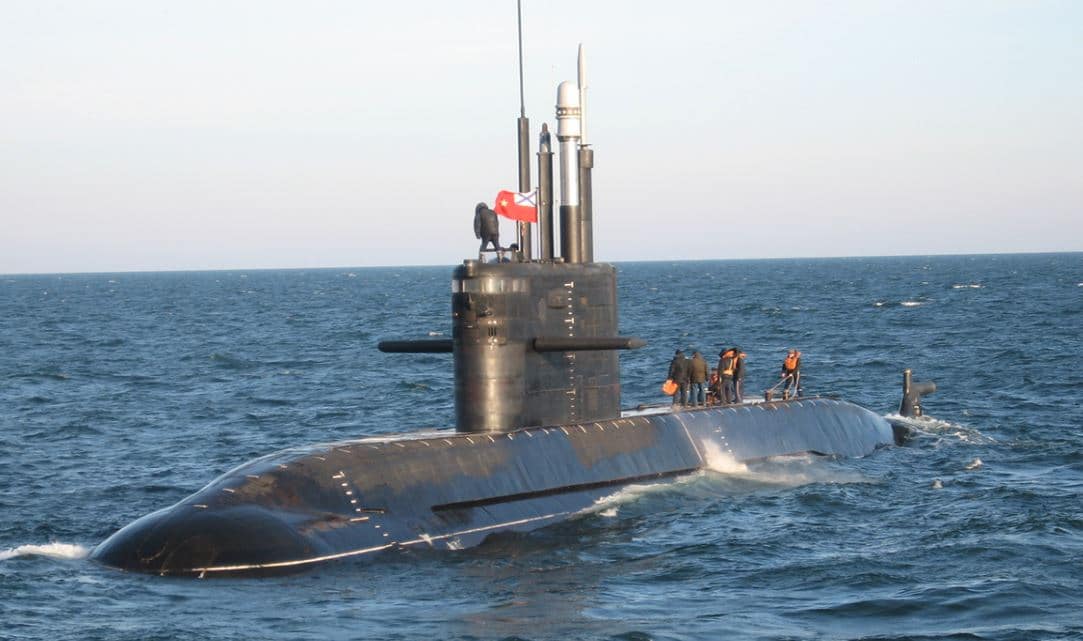2787Views 1Comment

Russia to increase efforts to export miniature submarines
Russia’s state-owned defence industry promotion and trade management company Rosoboronexport has announced that it will reinforce efforts to market and export miniature submarines.
Rosoboronexport believes the market for miniature diesel-electric submarines (SSK) and air-independent propulsion (AIP)-powered submarines (SSP) could amount to $4 billion U.S. through the next five years.
Upwards of 10 models in the range of 130 tons to 1,000 tons will be offered to prospective customers.
Igor Sevastyanov, the Deputy Director General of Rosoboronexport, outlined that mini-submarines are a “unique segment of the naval market.” Despite the size constraints, mini-SSK/SSPs could undertake many important roles, such anti-ship warfare (AShW), anti-submarine warfare (ASW), minelaying and others.
Notes & Comments:
Russia is not the only shipbuilder focusing on the prospective mini-SSK market. In November 2017, China Shipbuilding Industry Corporation (CSIC) revealed two small SSK platforms, i.e. the 600-ton S600 and the 200-ton MS200. Although mini-SSK designs lack the payload capacity, endurance and range of their larger counterparts, they are less costly to procure, which could open the means for subsurface capability to a larger pool of prospective buyers, especially in the developing world. In fact, even navies with larger AIP submarines can potentially use mini-SSKs, especially for deploying special forces (i.e. frogmen operations) and denying enemy access to littoral waters by laying mines and, if equipped for the role, AShW and ASW.
AShW and ASW capabilities are not a necessity for mini-SSKs. Some navies, such as Pakistan, may simply require platforms for primarily frogmen operations and mine-laying. Furthermore, adding torpedo tubes and combat management system would add to the cost, thus reducing the cost-savings of a mini-SSK.
On the other hand, a 200-500-ton SSK that can draw upon the benefits of both mini-SSKs and larger SSK/SSPs could be an optimal littoral warfare asset. Granted, the limitation of space will hamper payload capacity, but if fielded in relatively high numbers in one’s littoral waters – especially when submerged and relying on busy waters for acoustic masking – mini-SSKs would be a credible AShW and ASW threat. In the scenario where a user shares a coastline with its adversary, a mini-SSK capable of launching a long-range land-attack cruise missile could warrant the need for said adversary to station more of its ASW assets near home instead of trying to interdict another’s sea-lanes or engaging in other offensive operations.



1 Comment
by Abdul Basit Iqbal
Let’s see how this Russian strategy would work. IMO it won’t. In past there had been many promotions of small subs by DCNS (i.e. ANDRASTA and entire SMX-21, 22, 23, 24, 25 & 26 line up) and by Russia (i.e. AMUR-950, my favourite). But globally we haven’t seen any customer for those subs.I
In our region, it was thought that Rich Arabs would like to have the little subs, specially suitable for Red Sea & Persian Gulf (because these seas are shallow and narrow). The Arabs had also shown interest in training there crew. They approached USA, France, UK and Germany for crew training (but received regret). Afterwards they received some training from few Asian countries. But in the end, no customer had ordered for a small sub.
Whereas I’ve observed a general inclination of nations towards slightly heavier conventional subs with AIP and a capability to venture deeper into oceans.
Commenting on the design. The new subs which are being talked about, aren’t providing anything new or innovative, except for a small design. IMO if wonderful designs such as SMX-26 and AMUR-950 (both are my personal favourites) weren’t able to get confirm orders, than definitely these subs won’t get either….